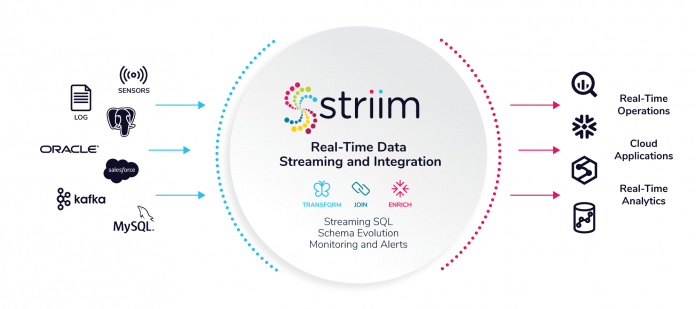Data pipelines help to bring together data from various sources, allowing for quicker analysis and business insights. Furthermore, data pipelines give data analysts and business users the data they need, without requiring access to sensitive production systems.
Some common challenges teams face building data pipelines include data loss or duplication, delays due to batch-based processing, inability to handle semi-structured or unstructured data, and limited scalability.
What are Smart Data Pipelines?
A Smart Data Pipeline is defined as a data pipeline that has built-in intelligence to identify and address both threats and opportunities on demand — from a schema change in a database to a rapidly growing social media trend and more — so that organizations can stay ahead of their competition and mitigate the effects of potentially devastating problems.
Capabilities of Smart Data Pipelines
Smart Data Pipelines have emerged to address real-world challenges and meet the need for instant insights and heightened customer expectations. Here are eight key capabilities of Smart Data Pipelines, and why they matter for forward-thinking enterprises:
1. Real-time data integration: Since data pipelines connect disparate sources to targets, Smart Data Pipelines have built-in connectors to databases, data warehouses, IoT, messaging systems, applications, and more. These connectors should facilitate real-time movement of data, and they should enable a one-many architecture, where one source can feed multiple pipelines to distinct data targets.
2. Location-agnostic: Smart Data Pipelines can be launched wherever data resides: on-premises or in the cloud. Furthermore, Smart Data Pipelines seamlessly straddle on-premise and cloud environments, enabling organizations to create a data architecture that adapts to their unique needs.
3. Applications on streaming data: Smart Data Pipelines extend beyond simply delivering data from one place to another. Smart Data Pipelines enable users to easily build applications on streaming data, ideally with a SQL-based engine that’s familiar to developers and data analysts alike. It should allow for filtering, transforming, and data enrichment, for use cases such as PII masking, data denormalization, and more.
Furthermore, Smart Data Pipelines incorporate machine learning on streaming data to make predictions and detect anomalies (e.g. fraud detection by financial institutions). Smart Data Pipelines also enable automated responses to critical operational events via alerts, live monitoring dashboards, and triggered actions (e.g. corrective workflows triggered by error or status streams).
4. Scalability: While traditional pipelines aren’t designed to handle multiple workloads in parallel, Smart Data Pipelines feature an architecture in which compute resources are distributed across independent clusters. If an organization needs to scale its data processing by adding additional Smart Data Pipelines it should be able to do so with ease.
5. Reliability: For critical data flows, Smart Data Pipelines are able to guarantee exactly-once or at-least-once processing. In addition, applications must be able to fail over to other nodes to ensure zero downtime.
6. Schema evolution for database sources: Schema changes in source tables (e.g. adding new columns) shouldn’t cause a data pipeline to crash. Smart Data Pipelines are equipped with schema evolution capabilities so that users can specify exactly how they want to handle DDL changes (e.g. halt the application, ignore the DDL change, alert a user, etc).
7. Pipeline monitoring: Smart Data Pipelines provide built-in dashboards and monitoring so users can monitor the state of their data flows in real-time and easily identify bottlenecks. Furthermore, Smart Data Pipelines validate data delivery and provide visibility into end-to-end lag to support mission-critical systems that have data freshness service-level agreements (SLAs).
8. Decentralized and decoupled: In response to the pitfalls of the traditional, monolithic data infrastructure, many organizations are starting to democratize access to data with a data mesh architecture. Smart Data Pipelines support decentralized and decoupled architectures in which an unlimited number of business groups are served analytical data products for their domain-specific use cases. By tapping into persisted event streams, data consumers can function independently of one another.
Build your first Smart Data Pipeline today
Data pipelines form the basis of digital systems. By transporting, transforming, and storing data, they allow organizations to make use of vital insights. However, data pipelines need to be kept up to date to tackle the increasing complexity and size of datasets. Smart Data Pipelines simplify and accelerate the modernization process by connecting on-premise and cloud environments, ultimately giving teams the ability to make better, faster decisions and gain a competitive advantage.
Striim is a unified real-time data streaming and integration platform that makes it easy to build Smart Data Pipelines connecting clouds, data, and applications.
Striim’s Smart Data Pipelines offer real-time data integration to over 100 sources and targets, a SQL-based engine for streaming data applications, high availability and scalability, schema evolution, monitoring, and more. To learn how to build Smart Data Pipelines with Striim today, request a demo or try Striim for free.
Read MoreStriim


